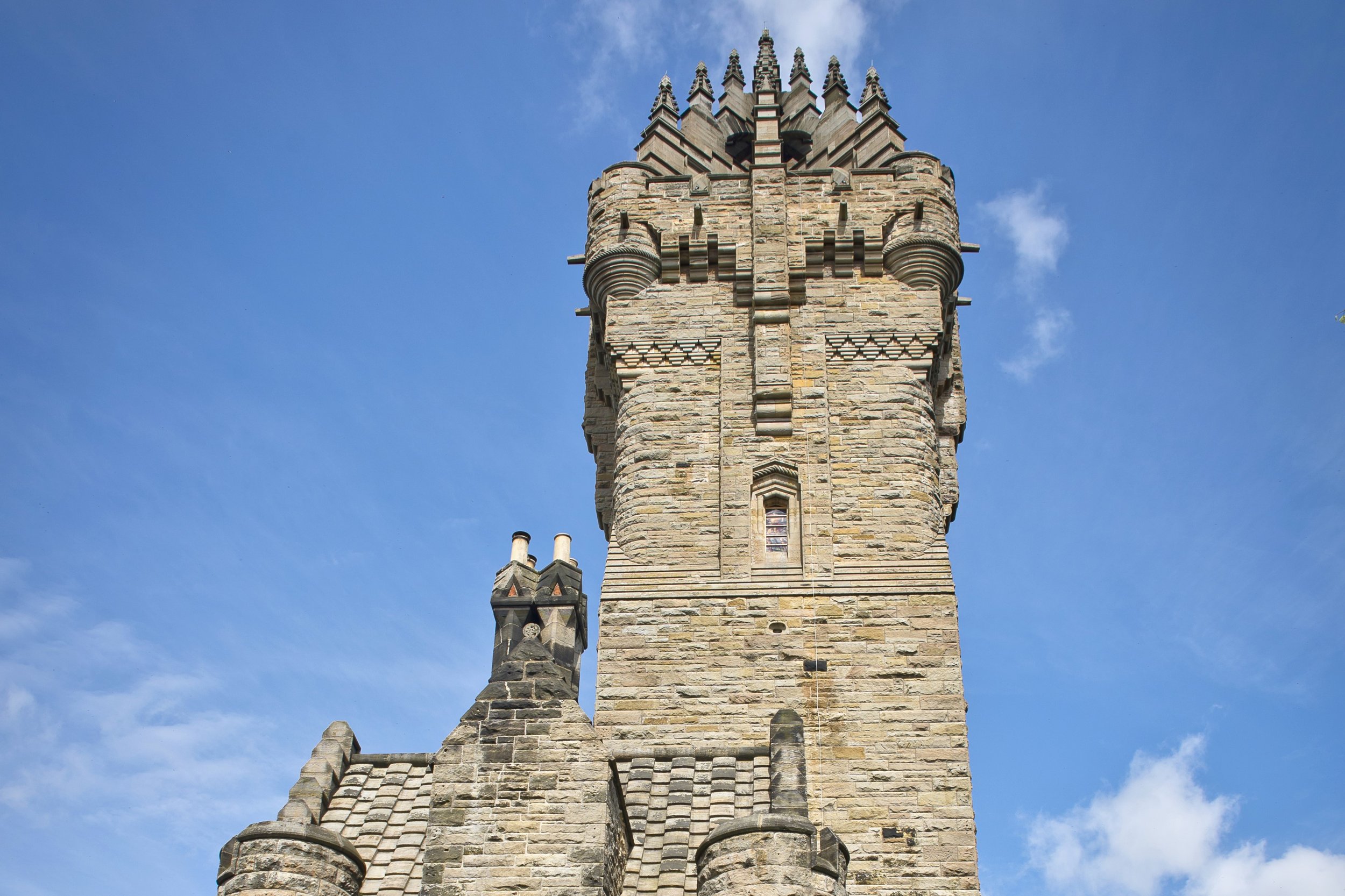
Heritage in Bridge of Allan
Bridge of Allan, Rich Scottish Heritage
Bridge of Allan is blessed with a rich Scottish heritage, both natural and cultural. Whether you’re an historian, naturalist or culture buff, you’ll be spoiled for choice with things to see and do when you visit our stunning town! For the town’s heritage trail, check out this handy walking guide curated by Explore Stirling (link below) – or read on for information about individual sites around the area.
“I shall never forget some of the days at Bridge of Allan. They were one golden dream.” Robert Louis Stevenson
-
The Memorial Park is located off Henderson Street in Bridge of Allan. The Memorial Park was donated to the local community by Major Edmund Pullar in 1919 following World War 1, as a location for a War Memorial. The Memorial was unveiled at the official opening ceremony on the 26th May 1923.
The Memorial was first dedicated in 1923 to commemorate the servicemen of Bridge of Allan who gave their lives in the Great War 1914-1919. Then, in 1947, it was rededicated listing the names of members of the armed services who fell in World War II. The cenotaph – an obelisk set on a marble plinth - was refurbished and rededicated in 2009.
Memorial Park remains largely consistent to the original 1920s park layout, comprising planted beds surrounding the centrally located War Memorial. The park's aesthetic value is both in the parks tree collection and setting. The Henderson Street boundary is planted up with ornamental Cherry trees which are a distinct feature of the park.
Tennis courts and a Multi Use Games Area are located within close proximity of the park. The path network within the park is suitable for all users.
-
-
One of Scotland’s most famous and historic landmarks, the monument was built in 1869 to commemorate Sir William Wallace, known as the Guardian of Scotland.
Standing 67 metres tall, at the top of the Abbey Craig Hill, those who climb the 246 steps to the top are treated to breathtaking views across Forth Valley and beyond. On a clear day visitors can see as far as Ben Lomond to the West and the Forth bridges to the East.
On the way up, the spiral staircase is broken up with impressive exhibition rooms. The Hall of Arms displays Wallace’s enormous sword and charts some of the key battles which took place around Stirling. The Hall of Heroes displays the busts of various key Scottish figures and their roles in Scottish history.
Around the base of the Monument, visitors can enjoy beautiful woodland walks and nature trails. Free parking is available, as well as a courtesy bus service to the Monument entrance.
-
-
Legends Coffee House and Legends Gift Shop sit at the foot of the Abbey Craig with stunning views up to the National Wallace Monument. We pride ourselves on being independently managed as a local charitable trust serving visitors and local residents for over 25 years.
Our menu proudly showcases Scottish produce served with a smile and warm welcome. Scones are freshly baked every morning and a tempting selection of breakfast and lunch options are always on offer. Did we mention cake?!
You‘ll find lots of great gift ideas at Legends shop, from hand crafted jewellery to pottery and clothing, ideal for treating someone or yourself.
Stirling District Tourism Ltd, the independent local charity behind Legends at the Monument also promote a range of heritage, history and educational activities throughout the Stirling area – have a look at the events section on our website to see what’s on this month.
-
www.legendsatthemonument.co.uk
01786 533127
-
Erected in 1899, this ornate iron memorial clock was commissioned in memory of Dr Alexander Paterson, a beloved town doctor. The clock features an Egyptian-style plinth, designed by the architect Alexander Thomson.
An engraved dedication on one side reads:
“The Paterson Memorial, Erected By The Inhabitants Of Bridge Of Allan, And Others In Memory Of The Late Dr. Alexander Paterson, Who Practised In This District For Upwards Of 50 Years, And Who Was Medical Officer Of Health For The Burgh. He Was Held In Universal Esteem, Being A Skillful Physician And A Kind Friend. 1898”
Although always sited outside the Westerton Arms at the junction sometimes referred to as “The Cross”, in 1929, the clock had to be moved closer to the Westerton Arms, to accommodate Bridge of Allan’s increase in road traffic.
-
Get Involved
Something you think ought to be on our website?
Click below to get in touch.




